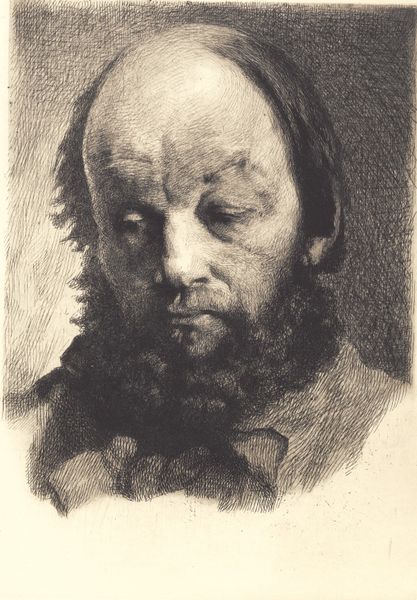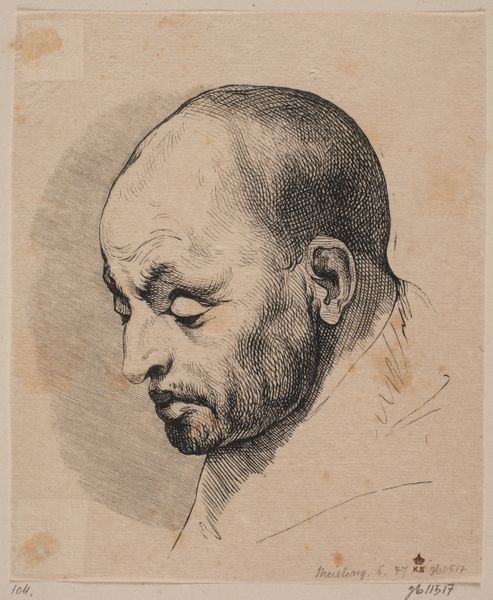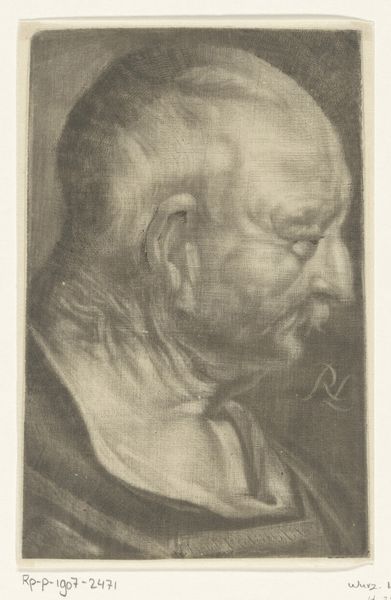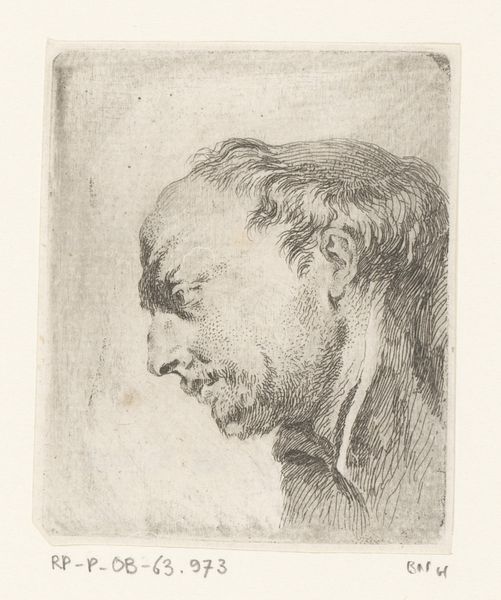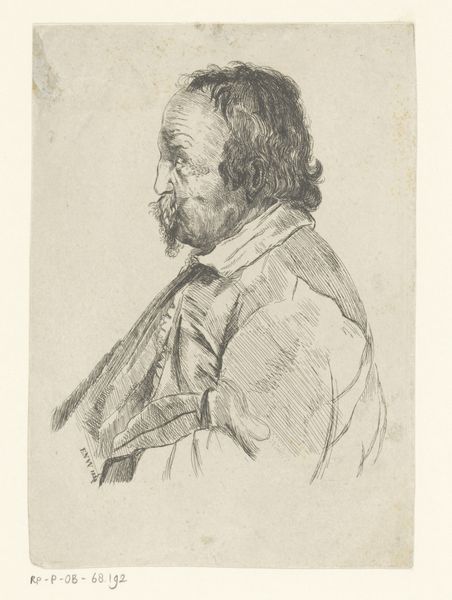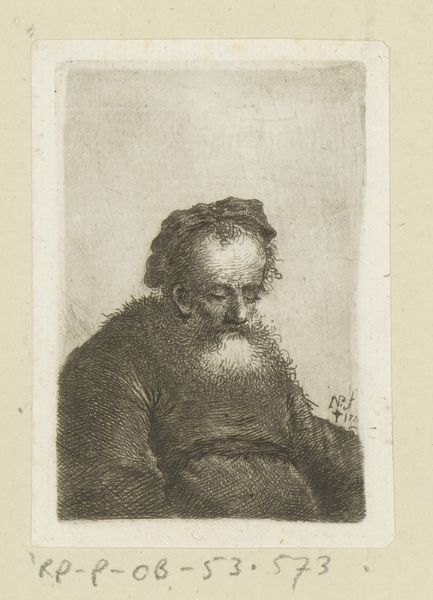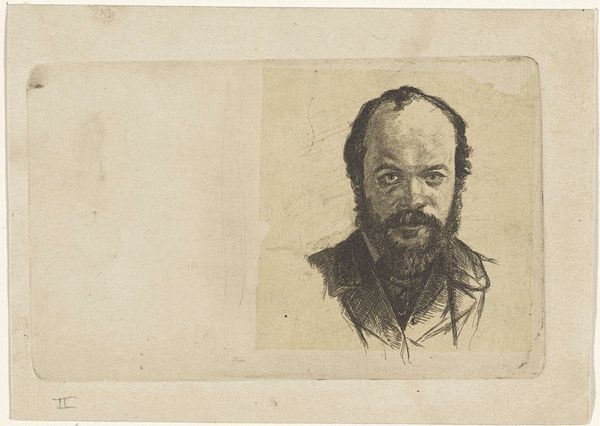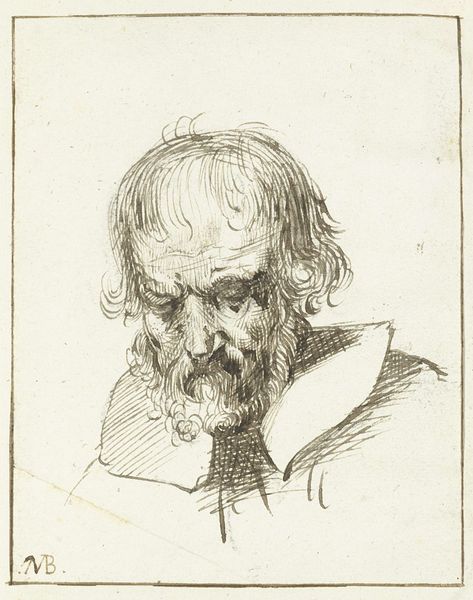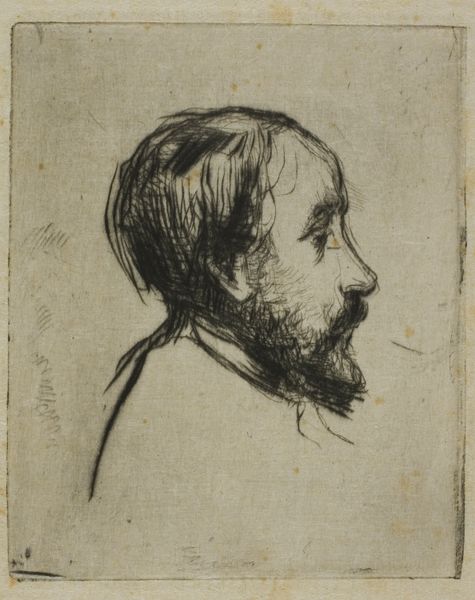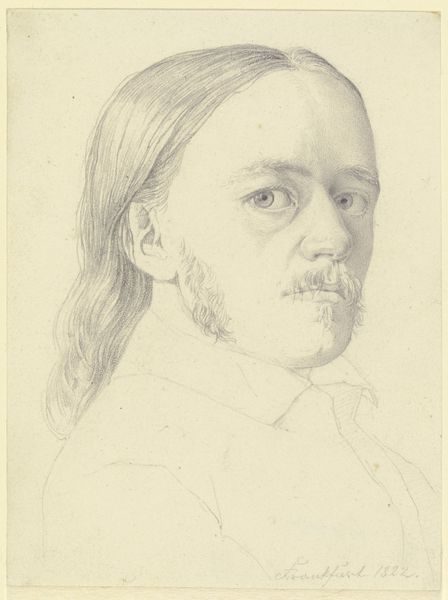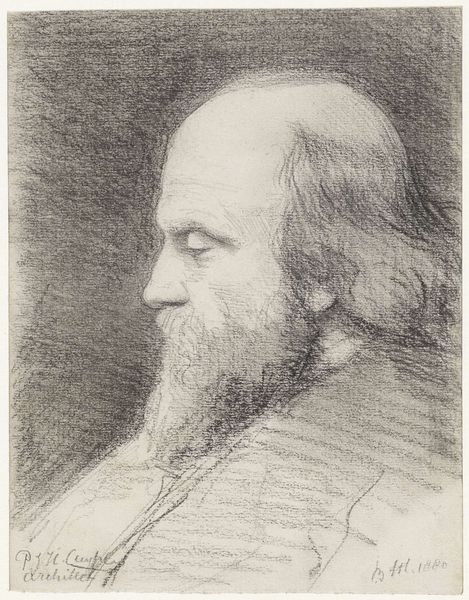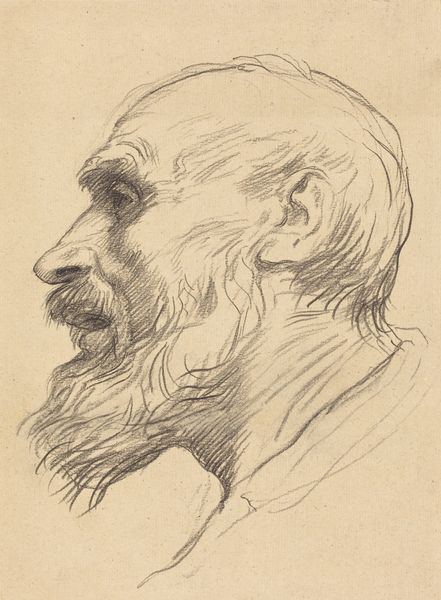
drawing, print, ink, engraving
#
portrait
#
pencil drawn
#
drawing
# print
#
pencil sketch
#
charcoal drawing
#
portrait reference
#
ink
#
pencil drawing
#
portrait drawing
#
engraving
#
realism
Dimensions: 119 mm (height) x 86 mm (width) (plademaal)
Editor: Here we have Frans Schwartz's "Sortskægget mand, Garibaldi," created in 1886, utilizing drawing, printmaking, ink, and engraving. The hatching and cross-hatching create a somber mood, almost melancholic. What strikes you when you examine its composition and execution? Curator: The interplay of light and shadow is immediately apparent. Observe how Schwartz modulates the density of lines to suggest form and volume. The strategic use of negative space around the head also contributes to the overall structure, does it not? Editor: It does. The way the lines are denser around the beard and lighter on the forehead really sculpts the face. It seems incredibly detailed, almost photographic despite being a drawing. Is this attention to detail common for portraiture of this time? Curator: One should analyze the function of line itself here. Note the fineness and precision. This isn’t mere representation; it’s a studied application of a graphic language. Schwartz's process prioritizes rigorous formal analysis, showcasing a keen understanding of tonal variation and textural rendering without necessarily invoking the political contexts one may initially presume, given the sitter's supposed identity. Editor: So, it’s less about capturing Garibaldi as a historical figure and more about experimenting with line and tone? I hadn’t thought of that. I’m so used to thinking about the subject first! Curator: Indeed. By divorcing our interpretation from historical narratives and instead focusing on the inherent artistic elements—the line, the form, the texture—we achieve a more informed appreciation of the artist's craft. Editor: I see. That changes how I’ll approach looking at portraits from now on. I was always trying to guess the sitter's story. Thank you. Curator: My pleasure. Recognizing the aesthetic properties is key. It's not just about ‘who’ but ‘how’ and ‘why’ the artwork achieves its impact.
Comments
No comments
Be the first to comment and join the conversation on the ultimate creative platform.
